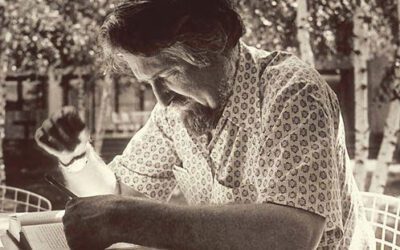
Across cultures and throughout history, humans have created sacred spaces for healing, ritual, and spiritual growth. From ancient temples to modern meditation rooms, these environments are imbued with a special quality that fosters safety, insight, and transformation. As philosopher Mircea Eliade (1959) observes, sacred spaces are “hierophanies” where the divine breaks through into the profane world, revealing a deeper order of reality.
This article will explore how different cultures create sacred healing spaces and how these concepts can inform the design of therapeutic environments. Drawing on insights from anthropology, religious studies, depth psychology, and architecture, it will outline key principles for crafting spaces that promote well-being and facilitate the healing process. By understanding the cross-cultural significance of sacred space, therapists can create settings that tap into the timeless human need for refuge, renewal, and reconnection.
The Anthropology of Sacred Space
Anthropologists have long been fascinated by the ways cultures sanctify certain spaces for healing and spiritual practice. French anthropologist Arnold van Gennep (2019) noted that many cultures have “liminal” spaces set apart from everyday life where individuals undergo rites of passage. These may include sweat lodges, vision quest sites, or initiation huts. By crossing the threshold into these sacred zones, individuals enter a timeless “betwixt and between” state that enables them to shed old identities and be reborn into new roles (Turner, 1970).
Similarly, mythologist Joseph Campbell (1972) observed that many hero myths involve a “belly of the whale” motif where the protagonist is swallowed into a dark, confined space. This symbolic death is a prelude to rebirth and the attainment of new knowledge and power. Sacred spaces often evoke this “container” archetype through womb-like features such as caves, tunnels, or dome structures (Eliade, 1959). Entering into these meditative wombs, individuals are symbolically digested and emerge transformed.
The specific form sacred spaces take varies widely across cultures. Psychoanalyst Erich Neumann (1963), drawing on his cross-cultural research, noted that sacred enclosures range from the mandala and sacred circle to the square, the temple, and the walled garden. Each of these forms creates a temenos or protected space that keeps out the profane and allows the sacred to emerge. For example, traditional Navajo hogans are round, earth-covered dwellings that evoke the primordial mound of creation (Eliade, 1959). By orienting the home to the four cardinal directions and placing the fire in the center, the Navajo create a microcosm of the sacred order.
The Psychology of Sacred Space
From a depth psychology perspective, sacred spaces are outward reflections of inner psychic realities. As Carl Jung (1963) observed, the architectural form of the temple or church is a projection of the God-image within the psyche. By entering into these numinous environments, individuals come into contact with the archetypal energies of the Self, the ordering principle of the personality.
For Jung, one of the most important sacred spaces is the temenos, an inviolable area where psychological transformation can occur. In analysis, the temenos is the alchemical vas or container of the therapeutic relationship. Within this sacred vessel, old attitudes and identities are “cooked” and transformed into new possibilities (Edinger, 1985). The sacred space of therapy provides a ritual container in which the “prima materia” of the client’s suffering can be held and worked into healing gold.
Jungian analyst Jean Shinoda Bolen extends the concept of temenos to the natural world. She argues that certain landscapes like mountains, forests, and seashores have a numinous quality that fosters psychological growth and spiritual connection. By spending time in these “power spots,” individuals can tap into the archetypal energies of nature and find renewal beyond their everyday identities. Bolen encourages therapists to utilize the healing power of the nature in their work, whether through outdoor sessions, vision quests, or guided imagery (Bolen, 1994).
Designing Therapeutic Spaces
How can therapists create environments that harness the healing potential of sacred space? Environmental psychologists and architects have identified key design features that promote well-being and facilitate transformation. These include:
Biophilic elements:
Incorporating natural materials, plants, views of nature, and organic forms into therapeutic spaces has been shown to reduce stress, improve mood, and speed healing (Kellert et al., 2011). Biophilic design taps into the archetypal power of nature as a source of regeneration and spiritual connection.
Spatial hierarchy:
Many sacred spaces have a clear progression from public to private zones, often featuring thresholds, gates, and increasing levels of enclosure (Eliade, 1959). This spatial hierarchy creates a sense of sanctuary and allows individuals to gradually transition from the everyday world into a state of contemplation. Therapy offices can utilize this principle through the use of private entrances, reception areas, and inner sanctums.
Sacred spaces often have a central point that acts as a “world axis” connecting heaven and earth (Eliade, 1959). In therapy spaces, a central focus such as a mandala, a piece of artwork, or an altar can serve as a symbolic anchor for the client’s process. This focal point creates a sense of orientation and invites the client to connect with deeper layers of the psyche.
The use of lighting, color, texture, and sound can create immersive environments that evoke specific feeling tones and archetypal energies (Malnar & Vodvarka, 2004). For example, soft, diffuse light can create a sense of dreaminess and spiritual connection, while earthy colors and textures can promote groundedness and stability. Therapists can use sensory design to create spaces that resonate with their clients’ psychological needs.
Sacred spaces are more than just beautiful environments – they are powerful archetypal containers for healing, growth, and spiritual transformation. By studying how different cultures create sacred spaces, therapists can gain insight into the deep human need for refuge, renewal, and reconnection. Incorporating principles of sacred design into therapeutic settings can help create temenos spaces where clients feel safe to explore their inner depths and tap into new sources of wisdom and healing. Ultimately, sacred space is not just “out there” but within the psyche itself – by crafting numinous environments, we invite the divine to manifest in the here and now of the therapeutic encounter.
Bibliography
Bolen, J. S. (1994). Crossing to Avalon: A Woman’s Midlife Quest for the Sacred Feminine. HarperOne.
Campbell, J. (1972). Myths to Live By. Viking Press.
Edinger, E. (1985). Anatomy of the Psyche: Alchemical Symbolism in Psychotherapy. Open Court.
Eliade, M. (1959). The Sacred and the Profane: The Nature of Religion. Harcourt, Brace & World.
Jung, C. G. (1963). Memories, Dreams, Reflections. Pantheon Books.
Kellert, S. R., Heerwagen, J., & Mador, M. (2011). Biophilic Design: The Theory, Science and Practice of Bringing Buildings to Life. John Wiley & Sons.
Malnar, J. M., & Vodvarka, F. (2004). Sensory Design. University of Minnesota Press.
Neumann, E. (1963). The Great Mother: An Analysis of the Archetype. Princeton University Press.
Turner, V. (1970). The Forest of Symbols: Aspects of Ndembu Ritual. Cornell University Press.
van Gennep, A. (2019). The Rites of Passage (2nd ed.). University of Chicago Press.


























0 Comments